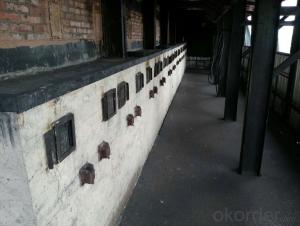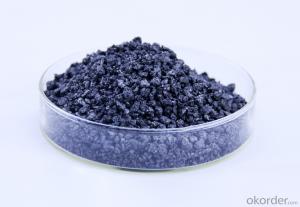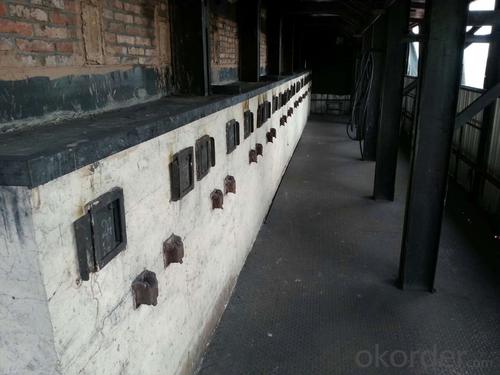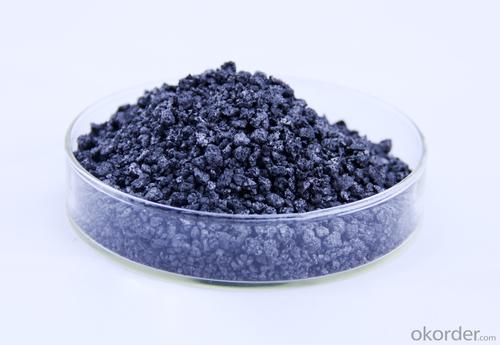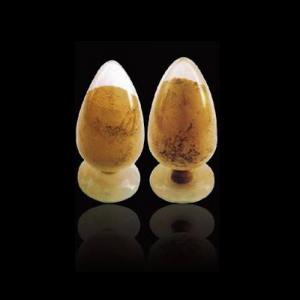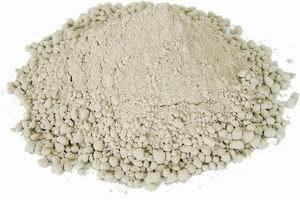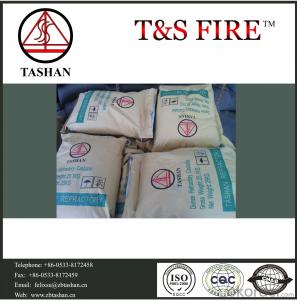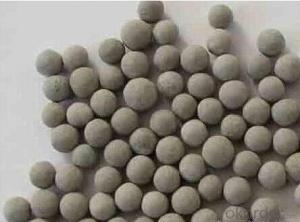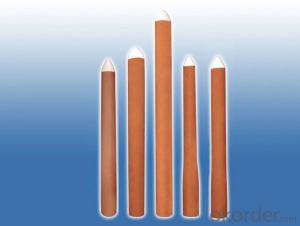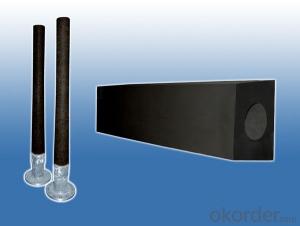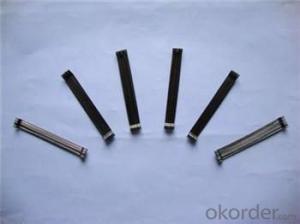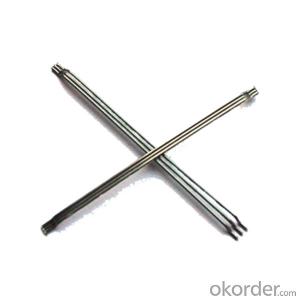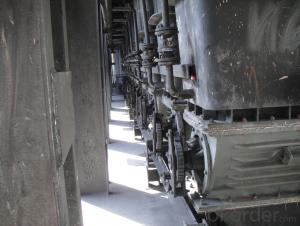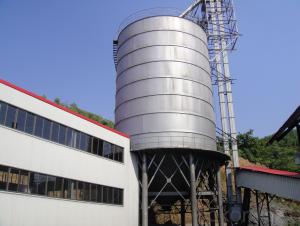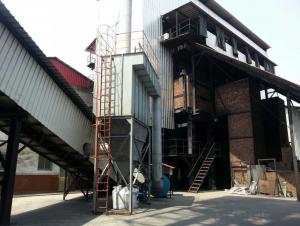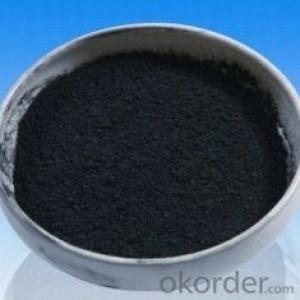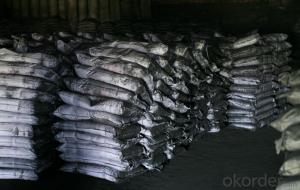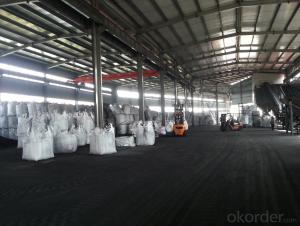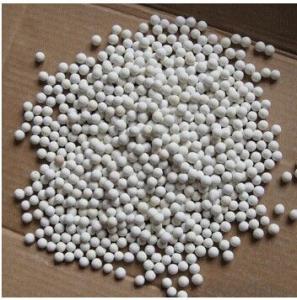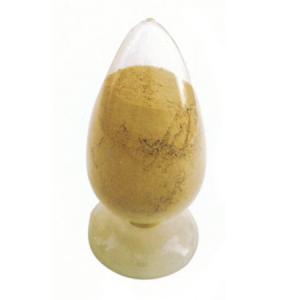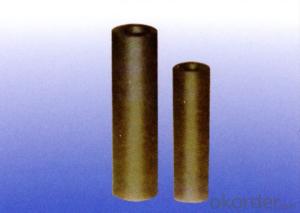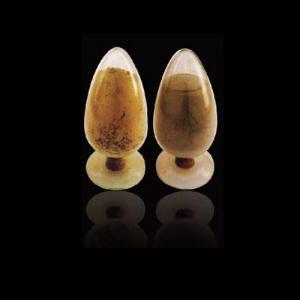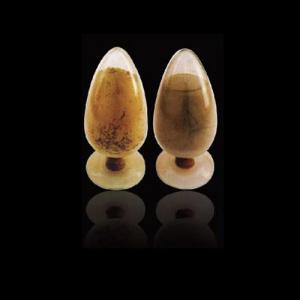Monolithic Refractories Low Nitrogen Carbon Raiser Graphite Pitch Coke for Iron and Steel Industry
- Loading Port:
- Shekou
- Payment Terms:
- TT OR LC
- Min Order Qty:
- 20 m.t
- Supply Capability:
- 1000 m.t/month
OKorder Service Pledge
OKorder Financial Service
You Might Also Like
Factory Background
The factory is majorly running and operating carbon additive (pitch coke, calcined petroleum coke and anthracite), low nitrogen carbon additive, and brake pad making material. Company is the long term supplier of Sinosteel Corporation, Shanghai Carbon Corporation, the plant of SGL Group the Carbon Company in China and some largest special carbon products producing plants.
YUAI also supplies huge amout of high quality carbon additive and graphite carbon additive to steel plants, foundries and ferrotungsten plants. YUAI has been assigned by BAO STEEL as the only organization for processing pitch coke for export purpose. The group’s major products are constantly exported to Japan, Korea, Malaysia, South East Asia countries, Europe and America, which receive praises by our consumers.
The group has invested numbers of calcinators in Anhui China to ensure the capability of producing and processing huge amount of carbon additive. Further investment is on process. According to the orders from customers, YUAI is able to processing and providing different specifications of carbon additive and other products. To provide best quality of products and to offer customers most satisfied service is YUAI’s operating objectives.
Calcined Petroleum Coke
FC:98.5%min,
S:0.5%max
A:0.8%max
V:0.7%max
Mositure:0.5%max
Size:1-5mm
This product is mainly used in steel-making and foundry. Calcined Petroleum Coke
Calcined Petroleum Coke comes from delayed coke which extracted from oil refinery. Although Calcined Petroleum Coke contains a little bit higher level of sulfur and nitrogen than pitch coke, the price advantage still makes it widely used during steel-making and founding as a kind of carbon additive/carburant.
Technology:
Laborary Equpment
In our lab,we has a high precision balance,mullfe furnace,sample making machine, dring box,sulfur measurement instrument and other calibratiing equipments.As a result,before deliverung to our customers,our products have to pass a strict test to ensure the quality and components.The testing reports will be sent to our customers to confirm untill they satisfy with it.
Packaging & Delivery
Packaging Detail:25kg paper bag into 1t weaving bag 5kg, 10kg and 20kg weaving bag into 1t weaving bag 25kg weaving bag put on pallet covered with entanglement wrap product direct into packing bag 25kg paper bag put on pallet covered with entanglement Wrap 25kg weaving bag into 1t weaving bag.
Delivery Details: 7 days
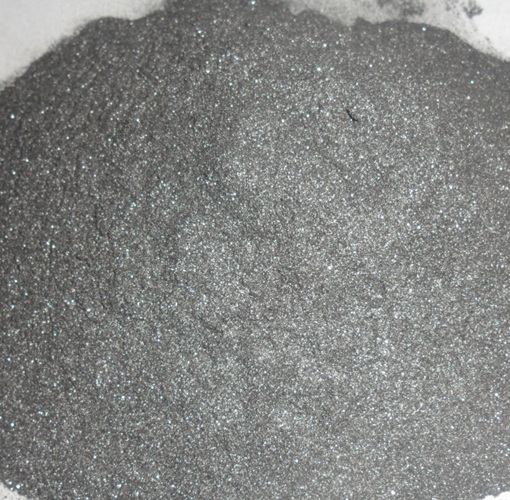
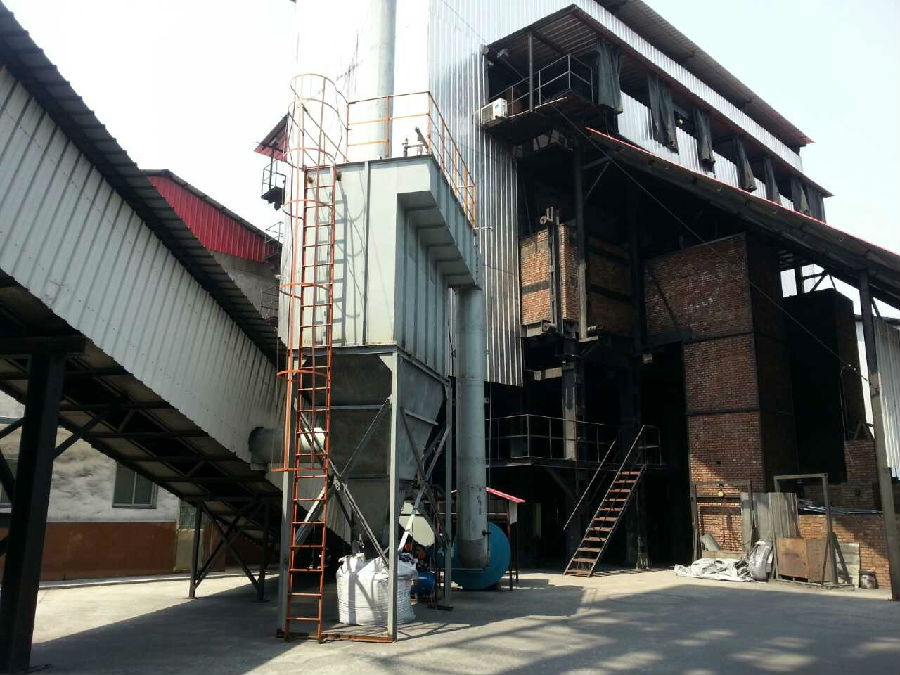
- Q: How do monolithic refractories withstand the corrosive environments in steelmaking processes?
- Due to their unique properties and composition, monolithic refractories are capable of enduring corrosive conditions in steelmaking processes. The primary feature of monolithic refractories is their exceptional ability to withstand high temperatures and thermal shock. Steelmaking procedures involve extremely high temperatures, which can reach up to 1700 degrees Celsius. Monolithic refractories are specifically engineered to endure these extreme temperatures without compromising their structural integrity. Moreover, monolithic refractories exhibit outstanding chemical resistance. The corrosive environments in steelmaking processes often include aggressive chemicals like molten metal, slag, and gases such as carbon monoxide and sulfur dioxide. Monolithic refractories are manufactured using materials that possess resistance to these chemicals. Consequently, these materials prevent any reactions and consequent corrosion. Furthermore, monolithic refractories possess a compact and uniform structure. This characteristic aids in preventing the infiltration of corrosive agents into the refractory material, further augmenting its resistance to corrosion. The compact structure also minimizes the formation of cracks and fissures, which can serve as pathways for corrosive agents to penetrate the refractory. Additionally, monolithic refractories are frequently composed of materials with high refractoriness, such as alumina, magnesia, and silica. These materials possess high melting points, rendering them more resistant to the extreme temperatures encountered in steelmaking processes. They also possess low thermal conductivity, which assists in reducing heat transfer and lowering the risk of thermal damage to the refractory. Lastly, monolithic refractories are often formulated with specific additives and binders that enhance their resistance to corrosion. These additives may include materials like zircon, chrome, or graphite, which provide supplementary protection against the corrosive environment. In conclusion, monolithic refractories demonstrate their ability to withstand the corrosive environments in steelmaking processes through their high resistance to temperature and thermal shock, excellent chemical resistance, dense and uniform structure, high refractoriness, and the utilization of specialized additives and binders. These attributes make monolithic refractories an optimal choice for enduring the rigorous conditions of steelmaking processes, ensuring the durability and efficiency of the refractory lining.
- Q: What are the main factors affecting the thermal expansion of monolithic refractories?
- The main factors affecting the thermal expansion of monolithic refractories include the chemical composition of the refractory material, the temperature at which it is exposed, and the rate at which it is heated or cooled. Other factors such as the presence of impurities, the porosity of the material, and the type of bonding agents used can also influence the thermal expansion behavior of monolithic refractories.
- Q: What are the advantages of using low-cement castables in the iron and steel industry?
- There are numerous benefits associated with the utilization of low-cement castables in the iron and steel sector. To begin with, low-cement castables necessitate less water compared to traditional castables. Consequently, the installation process becomes faster and more efficient due to the reduced water requirement. Moreover, the lower water content results in enhanced strength development and shorter drying time, facilitating faster turnaround times during production. In addition, low-cement castables exhibit exceptional resistance to extreme temperatures and thermal shocks. Given the high temperatures prevalent in the iron and steel industry, these castables possess excellent refractory properties that enable them to withstand such harsh conditions. Consequently, the refractory lining enjoys an extended service life, reducing the need for frequent repairs or replacements. Furthermore, low-cement castables demonstrate remarkable mechanical strength and abrasion resistance. Given the nature of the iron and steel sector, where heavy materials and abrasive substances are handled, the refractory lining is susceptible to wear and tear. However, low-cement castables are capable of enduring these mechanical stresses, thereby enhancing the durability and longevity of the lining. Moreover, low-cement castables possess low porosity and high density, resulting in reduced permeability. Consequently, they exhibit high resistance to alkali attacks, chemical corrosion, and slag penetration, all of which are common challenges faced in the iron and steel industry. By employing low-cement castables, the risk of refractory failure caused by these corrosive elements is minimized. Lastly, low-cement castables contribute to improved energy efficiency. Their lower thermal conductivity ensures that less heat is conducted through the refractory lining, leading to reduced heat losses. This, in turn, translates into energy savings, as less heat is wasted and more heat is retained within the system. The significance of this advantage is particularly evident in the iron and steel industry, where energy costs can be substantial. In conclusion, the use of low-cement castables in the iron and steel sector offers a multitude of advantages, including reduced water requirement, superior thermal resistance, enhanced mechanical strength, improved resistance to chemical corrosion, and increased energy efficiency. These benefits contribute to overall cost savings, heightened productivity, and improved operational performance in the iron and steel manufacturing process.
- Q: How do monolithic refractories resist chemical corrosion in iron and steel applications?
- Monolithic refractories resist chemical corrosion in iron and steel applications through their inherent properties and composition. They are designed to have high chemical stability and resistance to react with molten metals, slag, and other corrosive substances present in these applications. Additionally, monolithic refractories are usually formulated with specific additives and binders that enhance their resistance to chemical attack. This combination of properties and composition allows them to withstand the aggressive environment of iron and steel applications without significant degradation or corrosion.
- Q: What are the main types of monolithic refractories used in the iron and steel industry?
- The main types of monolithic refractories used in the iron and steel industry are castables, ramming materials, gunning materials, and plastic refractories. Castables are a type of refractory material that can be poured or cast into various shapes and sizes. They are made from a mixture of refractory aggregates, binders, and additives. Castables are commonly used in areas such as ladles, tundishes, and blast furnaces due to their excellent thermal shock resistance and high strength. Ramming materials, also known as ramming mixes, are used for lining the bottoms of furnaces and other high-temperature applications. They are typically composed of refractory aggregates and a bonding agent, which allows them to be compacted or rammed into place. Ramming materials offer good resistance to thermal cycling and can withstand high temperatures. Gunning materials are designed to be sprayed or gunned onto the refractory surface using a high-pressure gunning machine. They are used for repairing and patching refractory linings that have been damaged or eroded. Gunning materials are usually made from a mixture of refractory aggregates, binders, and additives. They provide excellent adhesion and are commonly used in applications such as kilns, converters, and electric arc furnaces. Plastic refractories are a type of monolithic refractory that can be molded or formed into various shapes. They are made from a mixture of refractory aggregates, plasticizers, and binders. Plastic refractories are used for lining various equipment and structures in the iron and steel industry, including boilers, incinerators, and chimneys. They offer good resistance to thermal shock and can be easily installed by hand or with a trowel. Overall, these types of monolithic refractories play a crucial role in the iron and steel industry by providing high-temperature resistance, thermal insulation, and durability to the various equipment and structures used in the production process.
- Q: How do monolithic refractories perform in reheating furnace roof applications?
- Monolithic refractories are highly effective in reheating furnace roof applications. These refractories are known for their excellent thermal shock resistance, which is crucial in the extreme temperature conditions inside a reheating furnace. They can withstand rapid temperature changes without cracking or spalling, ensuring the longevity and durability of the furnace roof. Additionally, monolithic refractories offer superior insulation properties, which help in maintaining the desired temperature inside the furnace. These refractories have low thermal conductivity, preventing heat loss and reducing energy consumption. This not only improves the energy efficiency of the furnace but also contributes to cost savings for the operators. Furthermore, monolithic refractories provide excellent resistance to chemical attacks from gases and molten metals present in the furnace environment. They are designed to withstand corrosive atmospheres and prevent the penetration of harmful substances, thus prolonging the life of the roof refractory. Moreover, monolithic refractories offer easy installation and repair options. Their ability to be cast or gunned in place allows for a seamless and precise application to the roof structure. This feature also enables quick and efficient repairs or maintenance, minimizing downtime and production losses. In conclusion, monolithic refractories are a reliable and efficient choice for reheating furnace roof applications. Their exceptional thermal shock resistance, insulation properties, chemical resistance, and ease of installation make them an ideal solution for maintaining the structural integrity and performance of the furnace roof.
- Q: How do monolithic refractories improve the performance and efficiency of iron and steel production?
- Improved performance and efficiency in iron and steel production are achieved through the utilization of monolithic refractories. These specialized materials are designed to withstand extreme temperatures, chemical reactions, and mechanical stresses, making them ideal for high-temperature industrial processes. A key contribution of monolithic refractories is their ability to provide a protective lining for furnaces, kilns, and other equipment used in iron and steel production. Their superior heat resistance ensures that the underlying structure is shielded from the intense heat, preventing any detrimental effects on the equipment. This results in reduced downtime, extended service life, and ultimately, enhanced overall efficiency. Furthermore, monolithic refractories play a crucial role in improving thermal efficiency during the production process. By minimizing heat losses, these materials help maintain a stable and uniform temperature distribution, thereby enhancing the energy efficiency of the system. Precise temperature control is of utmost importance in iron and steel production to achieve the desired metallurgical properties of the final product. Additionally, monolithic refractories exhibit excellent resistance to chemical corrosion, erosion, and slag attacks. They act as a barrier between the molten metal and the refractory lining, preventing unwanted reactions and material degradation. This preserves the integrity of the furnace lining, reducing the need for frequent repairs or replacements. Consequently, it leads to increased productivity and long-term cost savings. Moreover, the ease with which monolithic refractories can be shaped, repaired, or replaced is another advantage. Unlike traditional brick refractories, which require labor-intensive and time-consuming installation, monolithic refractories offer a more flexible and efficient application. Their flexible nature allows for easy repair of damaged areas, minimizing downtime and ensuring uninterrupted production. In summary, the utilization of monolithic refractories significantly enhances the performance and efficiency of iron and steel production. These materials provide a protective lining, improve thermal efficiency, resist chemical corrosion, and offer easy installation and repair options. By optimizing the production process, monolithic refractories contribute to higher productivity, reduced downtime, and increased cost-effectiveness in the iron and steel industry.
- Q: How do monolithic refractories withstand thermal cycling in the iron and steel industry?
- Monolithic refractories withstand thermal cycling in the iron and steel industry through their unique properties and composition. These refractories are made from a single piece or mass, which eliminates joints and weak points that could be susceptible to thermal stress. Additionally, their high thermal conductivity and low thermal expansion help them absorb and distribute heat evenly, reducing the risk of cracking or damage during rapid temperature changes. The use of advanced bonding agents further enhances their durability and resistance to thermal cycling, allowing them to withstand the extreme conditions of the iron and steel industry.
- Q: How do monolithic refractories improve the performance of iron and steel furnaces?
- Monolithic refractories play a crucial role in enhancing the performance of iron and steel furnaces through various means. Firstly, these refractories offer exceptional thermal insulation, which helps maintain a stable and high temperature within the furnace. This is of utmost importance as the production of iron and steel necessitates extremely high temperatures for efficient melting and refining processes. Secondly, monolithic refractories possess remarkable resistance to thermal shock and can endure rapid temperature fluctuations without cracking or spalling. This is particularly significant in iron and steel furnaces where temperature fluctuations can be substantial during operations. By withstanding thermal shock, these refractories ensure the durability of the furnace lining, thereby reducing the need for maintenance and minimizing downtime. Moreover, monolithic refractories display excellent resistance to chemical attacks caused by the molten metal and slag in the furnace. The production of iron and steel involves the use of various chemical agents that can corrode and erode the furnace lining. Monolithic refractories offer superior resistance to these chemical attacks, preserving the integrity of the furnace lining and preventing contamination of the metal being produced. Additionally, monolithic refractories possess exceptional mechanical strength and abrasion resistance. This is crucial as they are subjected to mechanical stresses and wear resulting from the movement of materials inside the furnace, such as charging and tapping operations. The high mechanical strength and abrasion resistance of these refractories ensure their durability and prolong their service life in iron and steel furnaces. In conclusion, monolithic refractories enhance the performance of iron and steel furnaces by providing superior thermal insulation, resistance to thermal shock and chemical attacks, as well as high mechanical strength and abrasion resistance. These properties contribute to the efficient and reliable operation of the furnace, resulting in increased productivity, reduced maintenance costs, and improved product quality.
- Q: What are the recommended curing times for monolithic refractories?
- The curing times for monolithic refractories can differ depending on the type of refractory and its specific application. Following the manufacturer's guidelines for curing times is crucial to ensure proper setting and development of the refractory material. For traditional castable refractories, the typical curing time ranges from 24 to 48 hours. During this period, it is important to control temperature and humidity conditions to allow for hydration and hardening of the castable. This curing time is essential to achieve the desired strength and durability of the refractory lining. In contrast, low cement or ultra-low cement castables may need a longer curing time due to their reduced water content. These refractories often require a curing period of 48 to 72 hours to allow for adequate bonding and solidification. For gunning mixes or shotcrete applications, the curing time may be shorter, usually around 8 to 12 hours. This faster curing process is facilitated by adding accelerators to the mix, which promote rapid setting and hardening. It is important to remember that these recommended curing times are general guidelines, and specific recommendations may vary depending on factors such as ambient temperature, humidity, and the specific refractory material used. Therefore, it is advisable to consult the manufacturer's instructions or seek guidance from a refractory specialist to ensure optimal curing and performance of the monolithic refractory.
Send your message to us
Monolithic Refractories Low Nitrogen Carbon Raiser Graphite Pitch Coke for Iron and Steel Industry
- Loading Port:
- Shekou
- Payment Terms:
- TT OR LC
- Min Order Qty:
- 20 m.t
- Supply Capability:
- 1000 m.t/month
OKorder Service Pledge
OKorder Financial Service
Similar products
Hot products
Hot Searches
Related keywords
